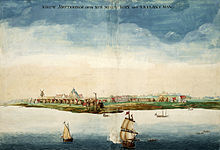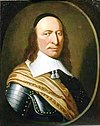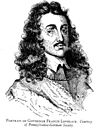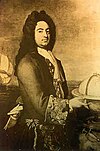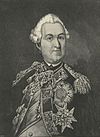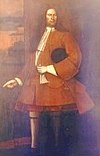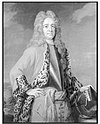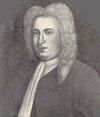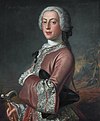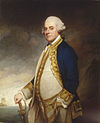
New Amsterdam was a 17th-century Dutch settlement established at the southern tip of Manhattan Island that served as the seat of the colonial government in New Netherland. The initial trading factory gave rise to the settlement around Fort Amsterdam. The fort was situated on the strategic southern tip of the island of Manhattan and was meant to defend the fur trade operations of the Dutch West India Company in the North River. In 1624, it became a provincial extension of the Dutch Republic and was designated as the capital of the province in 1625.

Peter Stuyvesant was a Dutch colonial officer who served as the last Dutch director-general of the colony of New Netherland from 1647 until it was ceded provisionally to the English in 1664, after which it was split into New York and New Jersey with lesser territory becoming parts of other colonies, and later, states. He was a major figure in the early history of New York City and his name has been given to various landmarks and points of interest throughout the city.
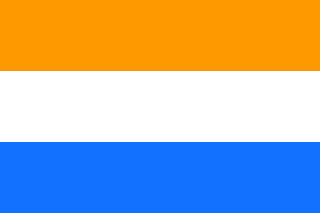
New Netherland was a 17th-century colonial province of the Dutch Republic located on the east coast of what is now the United States. The claimed territories extended from the Delmarva Peninsula to southwestern Cape Cod, while limited settlements were in parts of the U.S. states of New York, New Jersey, Delaware, and Connecticut, with small outposts in Pennsylvania and Rhode Island.

The Netherlands began its colonization of the Americas with the establishment of trading posts and plantations, which preceded the much wider known colonization activities of the Dutch in Asia. While the first Dutch fort in Asia was built in 1600, the first forts and settlements along the Essequibo River in Guyana date from the 1590s. Actual colonization, with the Dutch settling in the new lands, was not as common as by other European nations.

The Middle Colonies were a subset of the Thirteen Colonies in British America, located between the New England Colonies and the Southern Colonies. Along with the Chesapeake Colonies, this area now roughly makes up the Mid-Atlantic states.
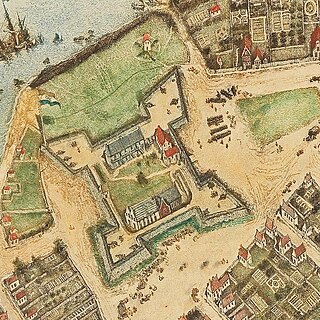
Fort Amsterdam was a fortification on the southern tip of Manhattan Island at the confluence of the Hudson and East rivers. The fort and the island were the center of trade and the administrative headquarters for the Dutch and then British/Colonial rule of the colony, of New Netherland and thereafter the Province of New York. The fort was the nucleus of the settlement on the island which was named New Amsterdam and eventually renamed New York by the English, and was central to much of New York's early history.

The Province of New Jersey was one of the Middle Colonies of Colonial America and became the U.S. state of New Jersey in 1776. The province had originally been settled by Europeans as part of New Netherland but came under English rule after the surrender of Fort Amsterdam in 1664, becoming a proprietary colony. The English renamed the province after the island of Jersey in the English Channel. The Dutch Republic reasserted control for a brief period in 1673–1674. After that it consisted of two political divisions, East Jersey and West Jersey, until they were united as a royal colony in 1702. The original boundaries of the province were slightly larger than the current state, extending into a part of the present state of New York, until the border was finalized in 1773.
This is a list of Directors, appointed by the Dutch West India Company, of the 17th century Dutch province of New Netherland in North America. Only the last, Peter Stuyvesant, held the title of Director General. As the colony grew, citizens advisory boards – known as the Twelve Men, Eight Men, and Nine Men – exerted more influence on the director and thus affairs of province.
York Shire was the first large governmental unit organized in the English Province of New York soon after English control of the area was established in 1664.
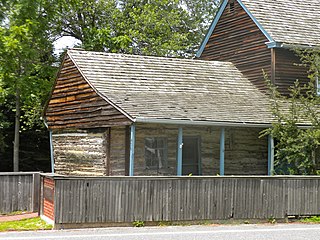
European colonization of New Jersey started soon after the 1609 exploration of its coast and bays by Henry Hudson. Dutch and Swedish colonists settled parts of the present-day state as New Netherland and New Sweden.
Anthony or Anthonij Colve was a Dutch captain of Marines and the Governor-General of New Netherland during a brief restoration of Dutch rule in New Netherland during the Third Anglo-Dutch War.

Fort Casimir or Fort Trinity was a Dutch fort in the seventeenth-century colony of New Netherland. It was located on a no-longer existing barrier island at the end of Chestnut Street in what is now New Castle, Delaware.

Cornelis Evertsen the Youngest was a Dutch naval officer from Vlissingen who served as Lieutenant Admiral of Zeeland and Supreme Commander of the Confederated Dutch Navy. Of a family that included several other naval admirals, including his father, Evertsen is noted for his distinguished service during the Second Anglo-Dutch War, Third Anglo-Dutch War, the Franco-Dutch War, the Glorious Revolution invasion, and the Battle of Beachy Head during the Nine Years' War.

New Holland was a colony established by Dutch naval captain Jurriaen Aernoutsz upon seizing the capital of Acadia, Fort Pentagouet in Penobscot Bay, and several other Acadian villages during the Franco-Dutch War. The Dutch imprisoned the Governor of Acadia Jacques de Chambly. The French and native allies under the command of St. Castin regained control of the area the following year in 1675, however, a year later the Dutch West India Company appointed Cornelis Steenwijck, a Dutch merchant in New York, governor of the "coasts and countries of Nova Scotia and Acadie." The formal Dutch claim to Acadia (1676) was finally abandoned at the end of the war with the Treaty of Nijmegen in 1678.

Jacob Binckes was a Dutch commodore. Jacob himself used the name Benckes.

The conquest of New Netherland occurred in 1664 as an English expedition led by Richard Nicolls that arrived in New York Harbor effected a peaceful capture of New Amsterdam, Fort Amsterdam and the Articles of Surrender of New Netherland were agreed. The conquest was mostly peaceful in the rest of the colony as well, except for some fighting in New Amstel.

The Dutch Raid on North America, took place from December 1672 to February 1674 during the Third Anglo-Dutch War, a related conflict of the Franco-Dutch War. A naval expedition led by Cornelis Evertsen the Youngest and Jacob Binckes attacked English and French possessions in North America.

The Second Battle of the James River, also known as the Battle of Lynnhaven Bay was a naval battle between a Dutch fleet under joint command of admirals Cornelis Evertsen the Youngest and Jacob Binckes and an improvised English squadron on 12 and 13 July 1673 in the Hampton Roads near the James River, during the Third Anglo-Dutch War.

On 9 August 1673, during the Third Anglo-Dutch War a combined Dutch fleet commanded by Cornelis Evertsen the Youngest of the Admiralty of Zeeland and Jacob Binckes of the Admiralty of Amsterdam recaptured New York, which had been English since the Peace of Breda of 1667. The town of New York was re-christened "New Orange" and New Netherland was re-established as a Dutch colony under governor-general Anthony Colve. The Dutch Republic, however, returned the colony to English rule under the Treaty of Westminster (1674), in exchange for the colony of Suriname, which eventually led to the replacement of governor Colve by governor Edmund Andros on 10 November 1674 (N.S.)
